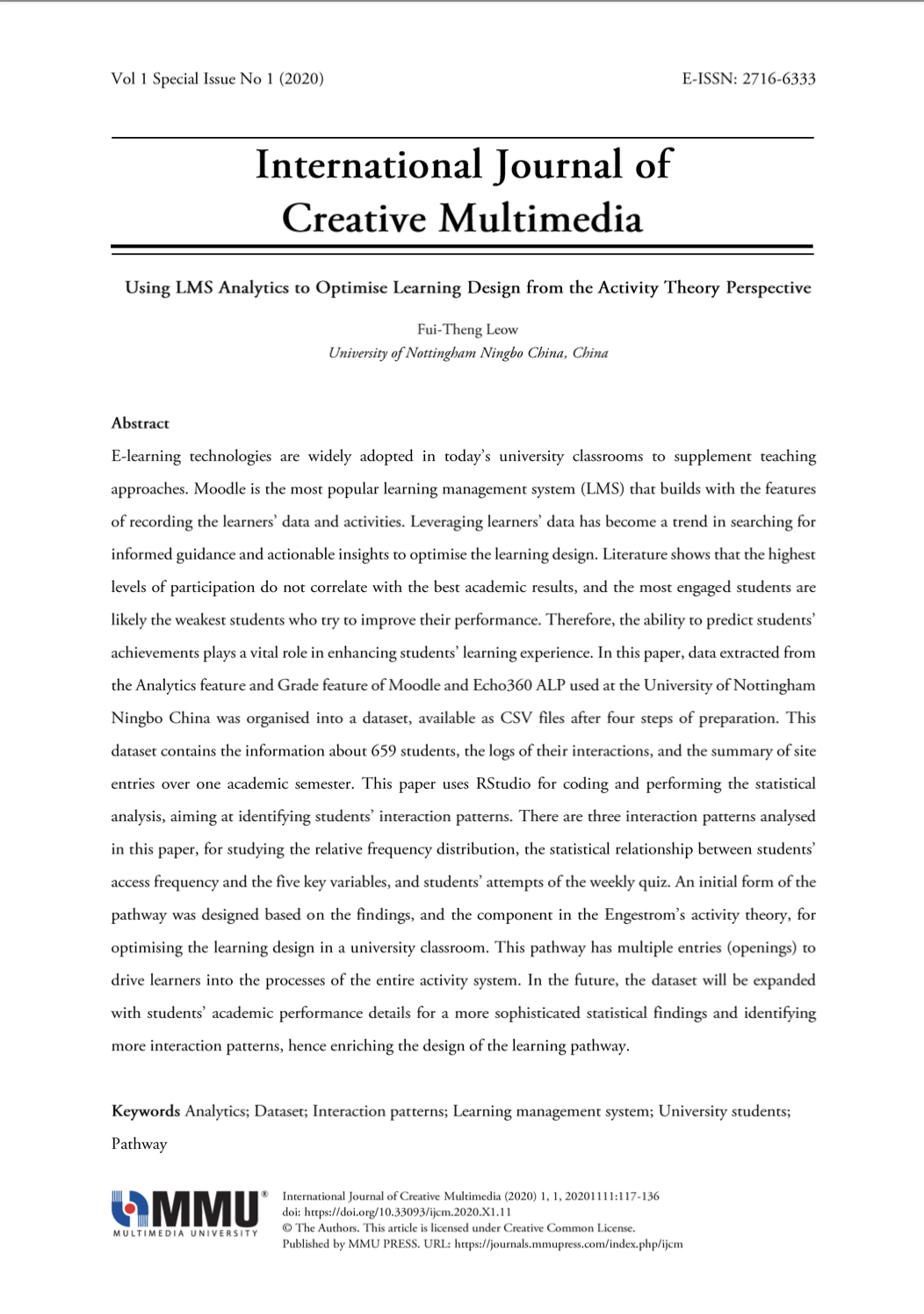Using LMS Analytics to Optimise Learning Design from the Activity Theory Perspective
Main Article Content
Abstract
E-learning technologies are widely adopted in today’s university classrooms to supplement teaching approaches. Moodle is the most popular learning management system (LMS) that builds with the features of recording the learners’ data and activities. Leveraging learners’ data has become a trend in searching for informed guidance and actionable insights to optimise the learning design. Literature shows that the highest levels of participation do not correlate with the best academic results, and the most engaged students are likely the weakest students who try to improve their performance. Therefore, the ability to predict students’ achievements plays a vital role in enhancing students’ learning experience. In this paper, data extracted from the Analytics feature and Grade feature of Moodle and Echo360 ALP used at the University of Nottingham Ningbo China was organised into a dataset, available as CSV files after four steps of preparation. This dataset contains the information about 659 students, the logs of their interactions, and the summary of site entries over one academic semester. This paper uses RStudio for coding and performing the statistical analysis, aiming at identifying students’ interaction patterns. There are three interaction patterns analysed in this paper, for studying the relative frequency distribution, the statistical relationship between students’ access frequency and the five key variables, and students’ attempts of the weekly quiz. An initial form of the pathway was designed based on the findings, and the component in the Engestrom’s activity theory, for optimising the learning design in a university classroom. This pathway has multiple entries (openings) to drive learners into the processes of the entire activity system. In the future, the dataset will be expanded with students’ academic performance details for a more sophisticated statistical findings and identifying more interaction patterns, hence enriching the design of the learning pathway.
Article Details

This work is licensed under a Creative Commons Attribution-NonCommercial-NoDerivatives 4.0 International License.

